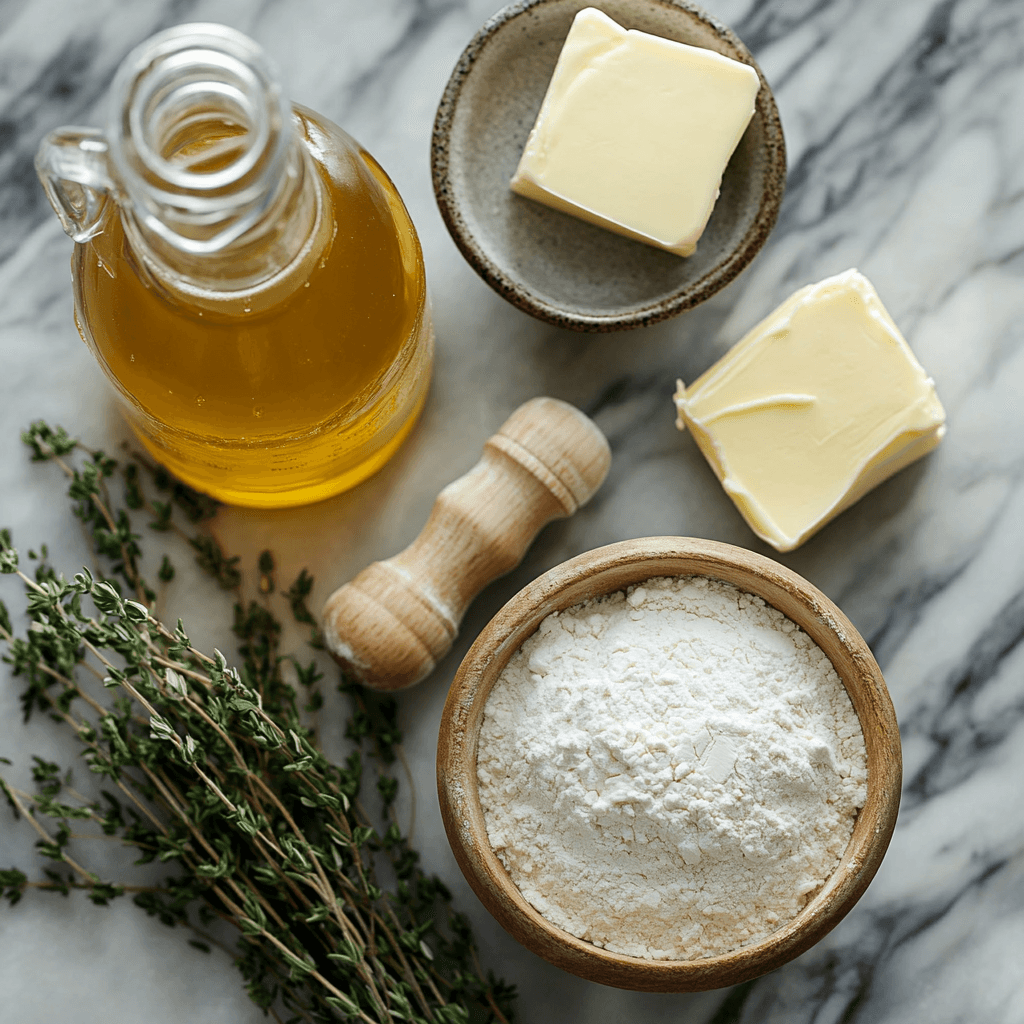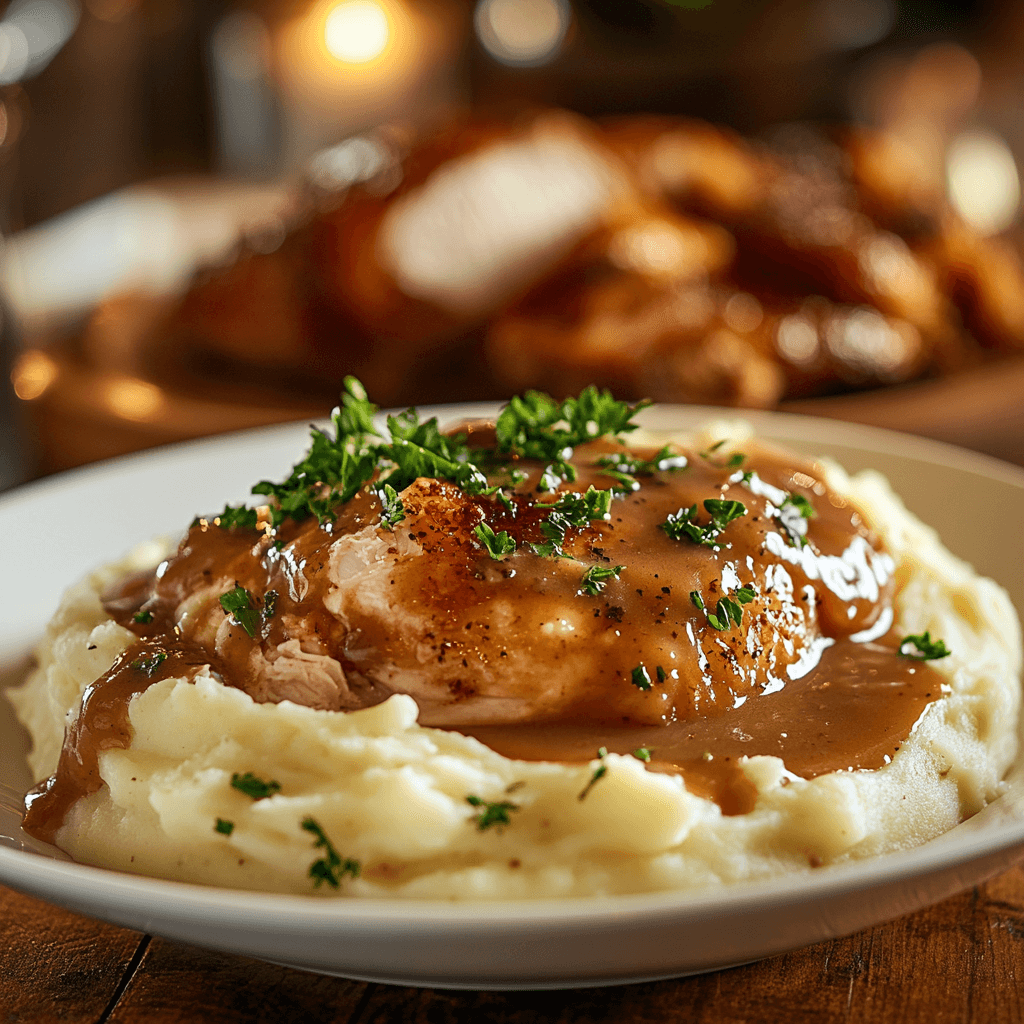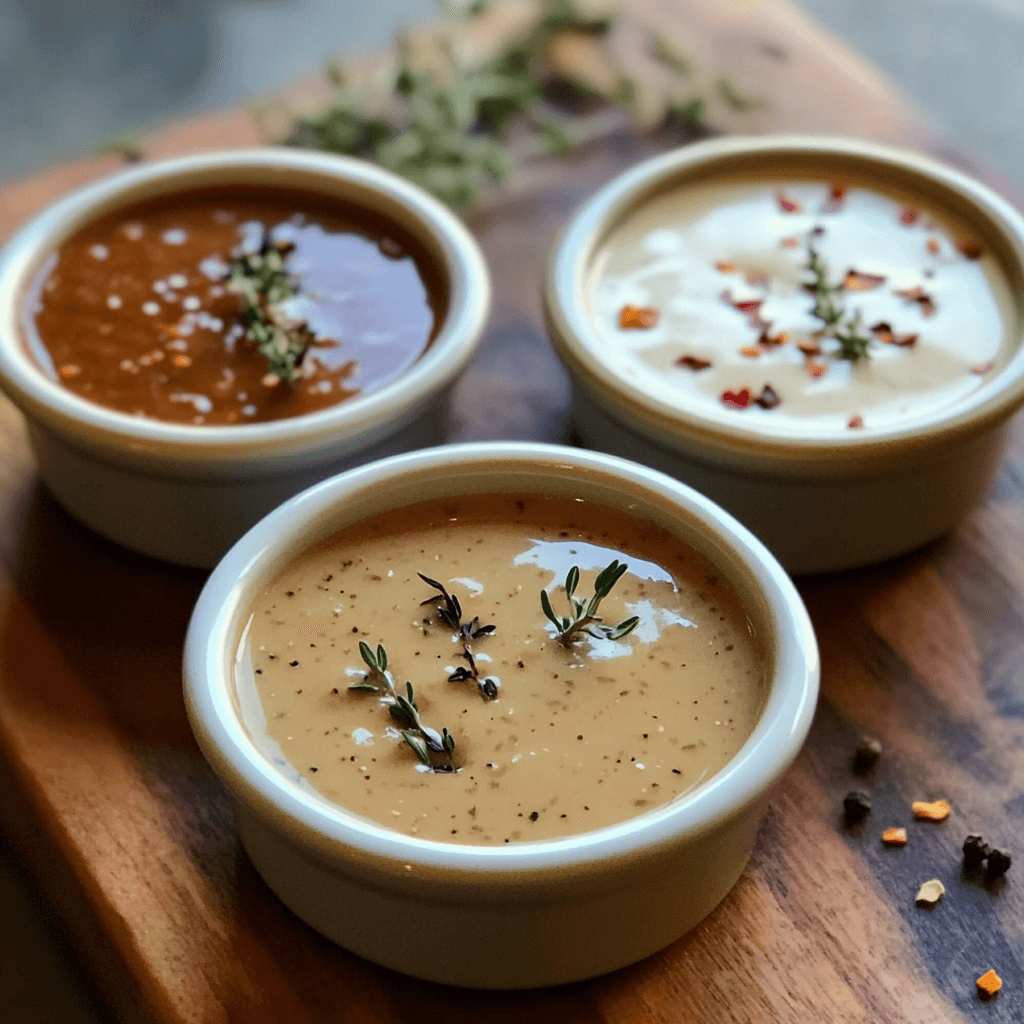Chicken Gravy Recipe is the ultimate comfort food that brings warmth and satisfaction to any meal. Whether served over mashed potatoes, biscuits, rice, or roasted chicken, this savory, flavorful gravy has a way of turning simple dishes into hearty and delicious feasts. Made with basic pantry staples and packed with rich flavors, this chicken gravy recipe is both easy to prepare and incredibly versatile.
This guide will walk you through an easy-to-follow recipe that ensures a creamy, smooth, and perfectly seasoned gravy every time. Whether you’re a seasoned cook or a beginner in the kitchen, mastering this recipe will add a comforting touch to your home-cooked meals.

Table of Contents
What is Chicken Gravy?
Chicken gravy is a savory sauce typically made by using the flavorful drippings left after cooking chicken. These drippings are combined with a thickening agent, such as flour or cornstarch, and a liquid like chicken broth or milk, to create a rich, velvety texture. The result is a smooth and flavorful sauce that complements chicken dishes and other comfort foods perfectly. Chicken gravy can be seasoned with herbs, spices, and aromatics like garlic or onion to enhance its depth of flavor.
Whether you’re preparing a quick weeknight dinner or a special meal, chicken gravy adds a burst of taste and a creamy consistency that ties the entire dish together.
The Importance of Gravy in Chicken Dishes
Gravy plays a vital role in elevating chicken dishes, turning them from simple to extraordinary. It not only enhances the flavor of the chicken but also adds moisture, ensuring that each bite is juicy and satisfying. A well-made gravy can balance and complement the spices and seasonings used in the dish, creating a harmonious and complete meal.
Chicken gravy is particularly valuable in dishes like roasted chicken, fried chicken, or biscuits and gravy, where its creamy texture adds comfort and warmth. It also acts as a binding agent for side dishes, seamlessly bringing elements like mashed potatoes, stuffing, or rice together.
In addition to taste, chicken gravy provides a sensory experience—its rich aroma and smooth texture create a sense of indulgence and nostalgia, reminding many of home-cooked family meals. For this reason, it is often considered a cornerstone of classic comfort food.
Ingredients Needed for the Best Chicken Gravy

Key Ingredients for Chicken Gravy
To create a delicious and flavorful chicken gravy, you’ll need a few basic ingredients that are likely already in your kitchen. These key ingredients form the foundation of a smooth, rich, and savory sauce:
- Chicken Drippings – The leftover juices from cooking chicken provide a deep, savory flavor. If unavailable, you can use chicken broth or stock.
- Chicken Broth or Stock – Adds moisture and flavor to the gravy. Opt for a high-quality broth for the best results.
- All-Purpose Flour – Acts as a thickening agent to give the gravy its velvety texture.
- Butter – Adds richness and helps to create the roux when combined with flour.
- Salt and Black Pepper – Essential for seasoning and enhancing the overall flavor.
- Milk or Heavy Cream (Optional) – Adds a creamy texture and mild flavor, especially for a richer gravy.
- Herbs and Spices (Optional) – Thyme, rosemary, garlic powder, or onion powder can be added for extra depth of flavor.
Substitutes for Missing Ingredients
Don’t worry if you’re missing one or two ingredients—there are simple substitutes that can help you make a delicious chicken gravy without compromising taste or texture:
- Chicken Drippings Substitute: Use a combination of butter and chicken broth to mimic the savory flavors of drippings. For added flavor, sauté onions or garlic in butter before adding the broth.
- Chicken Broth or Stock Substitute: If you don’t have chicken broth, dissolve a bouillon cube in hot water to create a quick broth. Vegetable broth can also work in a pinch.
- All-Purpose Flour Substitute: Use cornstarch as a gluten-free alternative. For every tablespoon of flour, use 1.5 teaspoons of cornstarch mixed with a small amount of cold water.
- Butter Substitute: Replace butter with olive oil or another neutral cooking oil for a dairy-free option.
- Milk or Heavy Cream Substitute: If you’re out of milk or cream, try using unsweetened almond milk, oat milk, or simply add a bit more chicken broth for a lighter consistency.
- Seasonings and Herbs Substitute: If fresh herbs are unavailable, dried herbs work just as well. Use 1 teaspoon of dried herbs for every tablespoon of fresh. Garlic or onion powder can also add flavor without requiring fresh ingredients.
With these flexible substitutes, you can confidently adapt your chicken gravy recipe to fit the ingredients you have on hand while still achieving a flavorful and comforting dish.
Preparing Chicken Gravy from Scratch
Step-by-Step Instructions for Making Chicken Gravy
Follow these simple steps to create a delicious and smooth chicken gravy from scratch. This method ensures a perfect balance of flavor and texture every time.
Browning the Chicken Drippings
- Collect the Drippings: After roasting or cooking chicken, transfer the drippings (juices and browned bits) to a skillet or saucepan. If you don’t have drippings, start with 2-3 tablespoons of butter.
- Heat the Drippings: Place the skillet over medium heat and allow the drippings or butter to warm up. Stir occasionally to scrape up the browned bits stuck to the bottom of the pan—these bits add a rich, savory flavor to the gravy.
- Optional Step for Extra Flavor: If you want more depth, sauté finely chopped onions or garlic in the drippings until golden brown.
Creating the Roux for Chicken Gravy
- Add Flour: Gradually sprinkle 2-3 tablespoons of all-purpose flour into the skillet with the warm drippings or butter.
- Stir Continuously: Use a whisk or wooden spoon to combine the flour with the drippings, creating a smooth paste (roux). Stir constantly for 1-2 minutes to cook off the raw flour taste. The roux should turn a light golden-brown color, which helps deepen the flavor.
- Adjust Consistency: If the roux looks too dry or crumbly, add a small amount of butter or oil to loosen it up.
Adding Broth for Flavor Depth
- Pour in Chicken Broth: Slowly pour 2 cups of warm chicken broth or stock into the skillet while whisking constantly to prevent lumps. Start with a small amount and gradually add more as the gravy begins to thicken.
- Simmer the Gravy: Bring the mixture to a gentle simmer over medium-low heat. Continue whisking to ensure a smooth texture as the gravy thickens. Simmer for about 3-5 minutes until it reaches your desired consistency.
- Season to Taste: Add salt, black pepper, and optional seasonings like thyme, rosemary, or garlic powder. If you prefer a creamier gravy, stir in a splash of milk or heavy cream at this stage.
- Final Adjustments: Taste the gravy and adjust the seasoning or thickness if necessary. For a thinner gravy, add more broth. For a thicker gravy, let it simmer a bit longer.
Serving Tip

Once the gravy is ready, serve it warm over mashed potatoes, roasted chicken, biscuits, or rice. The smooth, savory flavor will tie your meal together, making it the perfect comfort food for any occasion!
Tips for Achieving the Best Chicken Gravy
How to Prevent Lumps in Your Gravy
Lumps can often ruin the smooth texture of chicken gravy, but with a few simple tricks, you can avoid them entirely:
- Whisk Continuously: The key to a lump-free gravy is constant whisking, especially when adding flour or broth. This prevents the flour from clumping together and ensures an even consistency.
- Add Broth Gradually: Pour the broth or liquid slowly into the roux while whisking vigorously. Adding all the liquid at once can overwhelm the flour, making it harder to smooth out lumps.
- Use Warm Liquid: Using warm or hot broth instead of cold liquid helps the roux absorb the liquid more evenly, reducing the chances of lumps forming.
- Strain the Gravy: If lumps do form despite your best efforts, pour the gravy through a fine-mesh strainer. This will remove any remaining clumps and give you a smooth, silky sauce.
- Create a Slurry (Alternative): If you’re new to making gravy, you can mix flour or cornstarch with a small amount of cold water to create a smooth slurry before adding it to the drippings. This reduces the likelihood of clumps forming.
Ensuring a Smooth, Rich Texture
A smooth and rich texture is what makes chicken gravy so irresistible. Here are some tips to achieve that perfect finish:
- Cook the Roux Properly: Allow the flour to cook in the drippings for 1-2 minutes, stirring continuously. This step eliminates the raw flour taste and creates a flavorful base for the gravy.
- Incorporate Fat and Flour Evenly: Make sure the fat (butter or drippings) fully coats the flour to form a cohesive paste. A properly blended roux is essential for a smooth texture.
- Simmer, Don’t Boil: After adding the broth, simmer the gravy gently over medium-low heat. Boiling can cause the gravy to break, becoming thin or grainy.
- Add a Creamy Element: For a richer texture, stir in a small amount of heavy cream, whole milk, or even a pat of butter near the end of cooking. This enhances the creaminess and gives the gravy a luxurious finish.
- Taste and Adjust Consistency: If the gravy is too thick, gradually add more warm broth or water until the desired consistency is achieved. For gravy that’s too thin, allow it to simmer longer, stirring occasionally, to thicken naturally.
- Blend for Perfection: If you want an ultra-smooth gravy, use an immersion blender or regular blender to break down any lingering bits and achieve a perfectly velvety sauce.
Variations of Chicken Gravy Recipe

Southern-Style Chicken Gravy
Southern-style chicken gravy is a classic, hearty variation often served with fried chicken, biscuits, or mashed potatoes. It’s rich, flavorful, and made with simple, traditional ingredients.
Key Ingredients:
- Chicken drippings or butter
- All-purpose flour
- Whole milk or heavy cream
- Salt and black pepper
How to Make:
- Heat 2-3 tablespoons of chicken drippings or butter in a skillet over medium heat.
- Add 2 tablespoons of all-purpose flour and whisk continuously to create a smooth roux. Cook for 2-3 minutes until golden.
- Gradually pour in 2 cups of whole milk, whisking constantly to avoid lumps.
- Allow the gravy to simmer until it thickens to the desired consistency. Season with salt and black pepper to taste.
- Serve warm over biscuits, fried chicken, or mashed potatoes for the perfect Southern comfort dish.
Creamy Chicken Gravy with Milk or Cream
For a richer and creamier chicken gravy, this version incorporates milk or heavy cream, creating a luxurious, velvety texture perfect for comfort food lovers.
Key Ingredients:
- Chicken drippings or butter
- All-purpose flour
- Chicken broth
- Milk or heavy cream
- Salt, black pepper, and optional garlic powder
How to Make:
- Start by heating 2 tablespoons of chicken drippings or butter in a skillet.
- Whisk in 2 tablespoons of all-purpose flour to form a roux. Stir for 2 minutes to cook off the raw flour taste.
- Slowly add 1 cup of chicken broth, whisking constantly. Once it thickens, pour in 1 cup of milk or heavy cream for added richness.
- Simmer gently over low heat until the gravy is smooth and thickened. Add a pinch of salt, black pepper, and optional garlic powder for extra flavor.
- Serve this creamy gravy over chicken, rice, or fluffy mashed potatoes for a cozy meal.
Spicy Chicken Gravy for Bold Flavor
This variation is perfect for those who love a little heat in their meals. The addition of spices like chili powder, cayenne pepper, or hot sauce gives the chicken gravy a bold and exciting kick.
Key Ingredients:
- Chicken drippings or butter
- All-purpose flour
- Chicken broth
- Chili powder, cayenne pepper, and paprika
- Optional: hot sauce or red pepper flakes
How to Make:
- Heat 2 tablespoons of chicken drippings or butter in a skillet over medium heat.
- Whisk in 2 tablespoons of flour to form a roux, cooking for 2 minutes.
- Gradually add 2 cups of chicken broth while whisking to avoid lumps.
- Stir in ½ teaspoon of chili powder, ¼ teaspoon of cayenne pepper, and ½ teaspoon of paprika. Adjust the spice level based on your preference.
- For an extra kick, add a splash of hot sauce or a pinch of red pepper flakes. Let the gravy simmer until it thickens.
- Serve this bold and spicy gravy over grilled or fried chicken, rice, or biscuits for a flavorful twist.
Each of these variations adds a unique spin to the traditional chicken gravy recipe, making it easy to customize based on your taste preferences. Whether you crave Southern comfort, creamy richness, or bold spice, there’s a perfect chicken gravy option for every occasion!
Frequently Asked Questions (FAQs)
What is chicken gravy made of?
Chicken gravy is typically made from a combination of:
- Chicken Drippings: The juices and browned bits left after cooking chicken, which add rich, savory flavor.
- Fat: Butter or oil, used to create a smooth base for the gravy.
- Flour or Cornstarch: A thickening agent to give the gravy its signature smooth, velvety consistency.
- Liquid: Chicken broth or stock is commonly used, though milk or cream can be added for a creamier texture.
- Seasonings: Salt, black pepper, and optional herbs or spices such as thyme, garlic powder, or paprika to enhance the flavor.
Is gravy better with flour or cornstarch?
Both flour and cornstarch can be used to thicken gravy, but the choice depends on preference and dietary needs:
- Flour:
- Provides a richer, more robust flavor.
- Creates a slightly creamier texture.
- Requires more cooking time to eliminate the raw taste.
- Ideal for traditional gravies like chicken or turkey gravy.
- Cornstarch:
- Produces a glossy, translucent appearance.
- Creates a lighter, thinner consistency compared to flour.
- Thickens quickly, making it a faster option.
- A great gluten-free alternative.
Conclusion: If you prefer a classic, rich gravy, use flour. If you need a quicker or gluten-free option, cornstarch is the better choice.
How do you reduce bitterness in chicken gravy?
Bitterness in chicken gravy can occur due to over-browning drippings or burnt flour. Here are ways to fix it:
- Add a Sweet Element: A small pinch of sugar, honey, or maple syrup can balance out the bitterness.
- Incorporate Dairy: Adding a splash of milk, heavy cream, or butter can smooth out the flavors and reduce bitterness.
- Use Acidic Ingredients: A squeeze of lemon juice or a splash of vinegar can help neutralize bitterness and brighten the gravy.
- Dilute the Gravy: Add more chicken broth or water to reduce the concentration of bitter flavors.
- Strain It: If burnt bits are causing bitterness, strain the gravy through a fine-mesh sieve to remove them.
What are the 4 basic gravies?
The four basic types of gravies are:
- Brown Gravy: Made from meat drippings (like chicken, beef, or pork) and thickened with flour or cornstarch. It’s often served with roasted meats and mashed potatoes.
- White Gravy: A creamy gravy made with a roux of butter and flour, combined with milk or cream. It’s commonly served with biscuits, fried chicken, or sausage.
- Red Gravy: A tomato-based gravy, often seasoned with garlic, onions, and herbs. It’s popular in Italian and Cajun cuisines.
- Vegetable Gravy: Made using vegetable stock or pureed vegetables as the base, thickened with flour, cornstarch, or pureed ingredients. It’s ideal for vegetarian or vegan dishes.
Each type of gravy has its own distinct flavor and works beautifully with different types of dishes, making them essential in a variety of cuisines.
Conclusion
Recap of Key Tips for Perfect Chicken Gravy
Mastering chicken gravy is all about technique and attention to detail. Here’s a quick recap of the key tips to ensure success every time:
- Use Quality Ingredients: Start with chicken drippings, good-quality broth, and fresh seasonings for the best flavor.
- Make a Smooth Roux: Cook the flour and fat together while whisking continuously to avoid lumps and eliminate the raw flour taste.
- Add Liquid Gradually: Slowly pour in warm broth or milk while whisking to achieve a smooth, lump-free texture.
- Simmer Gently: Avoid boiling the gravy; instead, simmer it slowly to develop rich flavor and achieve the perfect consistency.
- Adjust to Taste: Season with salt, pepper, and optional herbs or spices, and taste as you go. Balance flavors with a bit of cream, butter, or acidity if needed.
By following these tips, you’ll create a rich, velvety gravy that elevates any meal.
Final Thoughts and Encouragement to Experiment
Chicken gravy is a timeless comfort food that brings warmth and flavor to countless dishes. While the traditional recipe is always a winner, don’t be afraid to get creative:
- Add herbs like thyme or rosemary for a fragrant touch.
- Incorporate cream or milk for a luxuriously smooth texture.
- Experiment with spices for a bold or spicy twist.
- Try variations like Southern-style, creamy, or spicy chicken gravy to find your favorite.
Cooking is all about experimenting and making recipes your own. Whether you’re preparing a simple weeknight meal or a special feast, homemade chicken gravy adds that perfect finishing touch. So, roll up your sleeves, grab your whisk, and enjoy creating a delicious, comforting gravy that will have everyone coming back for seconds!
Happy cooking! 🍽️
